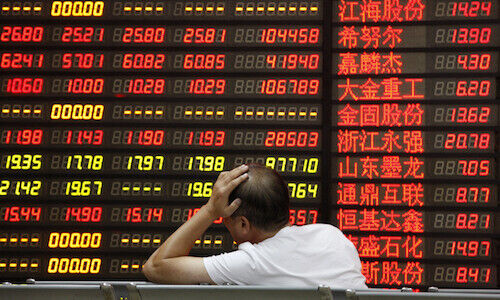China Evergrande: What Say the Banks?
With China Evergrande increasingly likely to miss upcoming bond payments, markets have shifted focus from default risk to contagion risk. What say the banks? finews.asia takes a look.
In addition to over $300 billion of debt, Evergrande’s cash crunch also faces additional challenges from investors of its wealth management products (some of whom have escalated to protesting and even reportedly holding executives hostage) as well as homebuyers of hundreds of thousands of incomplete units.
While some are optimistic that state intervention will result in, at worst, an orderly collapse, others are calling this China’s «Lehman moment» with markets beyond the mainland already feeling the ripples such as Hong Kong property developers, Australian miners and European financiers.
So, what say the banks?
UBS
According to UBS analysts, an Evergrande restructuring will likely result in a bond rebound and «broadly limited» contagion but a full liquidation could cause serious market spillovers.
In a note last week by the analysts, led by emerging market credit specialist Kamil Amin, the bank expects contagion risk, if materialized, to play out through three channels: low recovery values for investors resulting in a loss of confidence in the broader property sector and offshore Asia high yields; domino effect from credit events, hitting bank and non-banks with large exposure; and more credit agency re-ratings due to the parent group’s failure to maintain the solvency of subsidiaries.
UBS’ base case scenario sees a limited spillover from Evergrande to the rest of the property sector.
Citi
At Citi, risks are expected to remain «manageable» from expectations of broad easing to help policymakers actively manage credit risk in the property sector, according to a recent investment note.
«The market is clearly highly sensitive to China headlines after the tumultuous few months of regulatory tightening,» the note said. «But Citi analysts continue to believe that as growth slows, policy stance would shift towards maintaining stability. Even though common prosperity is a top priority, it would still require relatively fast economic growth powered by financial markets.»
The bank expects more volatility in the near term but notes that spillover is likely limited to highly levered developers, adding that there are still opportunities in quality names from the Chinese property credit market.
Goldman Sachs
Goldman Sachs warned that «events over the past week suggest risks of inching toward» contagion, forecasting three possible outcomes.
The first and base case is a 15 percent drop in land sales and housing, 5 percent drop in property sales and house prices, 10 percent increase in completions and moderate tightening.
The second scenario is a 23 percent drop in land sales and housing, 8 percent drop in pretty sales and house prices, flat completions and tightening at similar levels to 2014. And the third and most bearish scenario involves a 30 percent drop in land sales and housing, 10 percent drop in property sales, house prices and completions combined with a two-fold increase in tightening compared to the second scenario.
The three cases are expected to result in reduced GDP output by as high as 1.4 percent, 2.5 percent and 4.1 percent, respectively.
BNP Paribas Wealth Management
«We think that restructuring with a haircut is a more likely scenario with lower spillover effect. Also, we think Beijing still emphasizes social and economic stability and, hence, they will have easing measures if necessary,» said BNP Paribas Wealth Management’s Hong Kong chief investment advisor Grace Tam, highlighting last Friday’s central banking liquidity injection as the highest since February.
According to the bank, a disorderly bankruptcy and full liquidation is the worst case scenario with expected damage to financial institutions, the property sector as well as other asset markets due to loss of investor confidence.
More volatility is expected in the near term but in the event of an indiscriminate sell-off, the bank sees medium-term opportunities in sectors with government policy support such as electric vehicle supply chains, semiconductors, ruinable energy, high-end manufacturing alongside consumer and healthcare leaders.



























